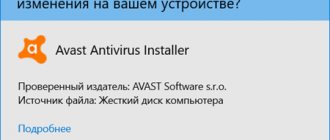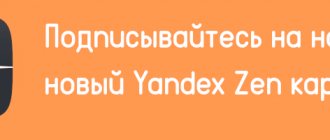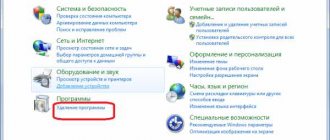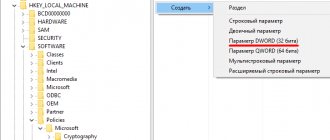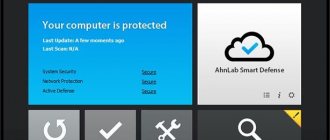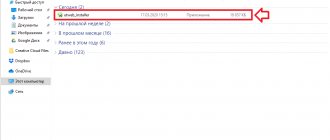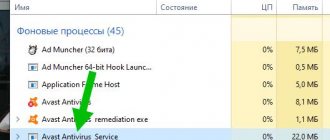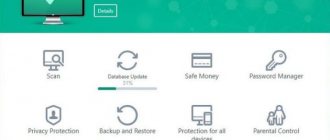Additional Notes
Information about the product features has been obtained from the official websites of each vendor. If you believe we have stated something not correct, please , and we'll fix it immediately. Our intention is to offer a fair and fact-based comparison of each product.
For measuring the boot time we have used a free tool called BootRacer . We have tested Avira Free Antivirus 2020 (2016.0.7163) and Avast Free Antivirus 2020 (2016.11.1.2253) released on February 3, 2020. Both tests were performed on a Windows 7 Professional x64 computer with CPU Intel Core i7 @ 2.70GHz and 8 GB RAM.
For measuring the overall PC performance we have used a free tool called PassMark PerformanceTest which tests various areas including CPU, graphics, disk, and memory.
Written by Paul B.
My name is Paul and I love Avast since the Home Edition v4.8 (2008). I am recommending it to all my friends, but I realized they don’t know how to use it. So I started this site in order to help others getting maximum from this awesome antivirus. Feel free to contact me via
Good day, dear readers of the blog site. Surely your home computer has some kind of anti-virus protection, no? If not, then I strongly recommend getting one; why this is necessary was discussed in one of the previous articles, specifically here. This can be either a paid antivirus or its free analogues; in most cases, free antivirus versions are installed, which, by the way, are not much inferior in terms of protection to many paid antiviruses, and you can download them completely free of charge. This is perhaps the most important advantage of free antiviruses (your “Cap Obviousness”).
For about a year, I had a free version of the Avast antivirus on my home computer (if anyone doesn’t know, this company also has a paid version “Avast Internet Security”, which in addition to the antivirus contains a firewall and a bunch of other any functionality). So this year I haven’t gotten a single virus! I periodically checked with the free Kaspersky virus cleaning utility, but it also didn’t find anything. All this led me to believe that in most cases installing a free antivirus is the best solution
, since such an antivirus provides a sufficient level of protection, does not slow down the system (unlike... you know who) and is inexpensive (free).
Based on the results of numerous antivirus tests on various resources, I selected four contenders for the title of the best free antivirus of 2014
. Of these, only two antiviruses have been on my computer for quite a long time as the main protection, these are Avast and AVG. The comparison was made using tests (antivirus ratings) + my experience of use, I will try to be objective. By the way, do not pay attention to the order in which antiviruses appear in the text, this does not mean anything, you just have to start somewhere.
Send
Cool
Link
The choice of antivirus should always be taken with great responsibility, because the security of your computer and confidential data depends on it. To fully protect your system, it is no longer necessary to buy a paid antivirus, since free analogues cope with the tasks quite successfully. Let's compare the main features of Avira Free Antivirus and Avast Free Antivirus to determine the best one.
Both of the above applications have cult status among antivirus programs. The German Avira antivirus is the world's very first mass free program to protect computers from malicious code and the actions of intruders. The Czech program Avast, in turn, is by far the most popular free antivirus in the world.
Of course, evaluating an interface is a very subjective matter. However, objective criteria can also be found in assessing appearance.
The Avira antivirus interface has remained without significant changes for many years. It looks somewhat ascetic and old-fashioned.
In contrast, Avast is constantly experimenting with the visual environment. In the latest version of Avast Free Antivirus, it is maximally adapted to work in the latest operating systems Windows 8 and Windows 10. In addition, managing Avast, thanks to the drop-down menu, is quite convenient.
So, regarding the evaluation of the interface, you need to give preference to the Czech antivirus.
Avira 0:1 Avast
Avira Free Antivirus 2020
Avira Free antivirus also has limited functionality and quite annoyingly advertises the transition to the paid version. Advertising for various Avira products pours out like a cornucopia even during installation by the web installer. That's probably why it took so damn long. Tired of watching the progress indicator, I managed to finish writing another article.
Continuation is available only to members
Option 1. Join the “site” community to read all materials on the site
Membership in the community within the specified period will give you access to ALL Hacker materials, increase your personal cumulative discount and allow you to accumulate a professional Xakep Score rating!
Anti-virus protection is a very important element for safe computer use, because it protects user data and prevents malicious code from entering the system. Surely even a novice PC user can immediately name several antivirus programs. And here the problem of choice appears. For example, people often face a dilemma: “Which antivirus is better: Avast or Kaspersky?”
. We have made a detailed comparison of these products and are ready to present it to you.
To be objective, you need to compare according to certain criteria, highlighting the advantages and disadvantages of both programs. We decided to define the following:
- Efficiency of protection.
- Ease of use, appearance.
- Availability (we are talking about the availability of paid/free publications plus antivirus versions for various platforms).
Let's go through each point in more detail.
Quality of virus protection
Perhaps this is the most important criterion for comparing antiviruses. But on the other hand, it is also the most controversial. After all, there is no way to say that Kaspersky is less reliable. And there are several reasons for this:
- Both projects protect the user's computer from all known threats
. In addition, they are regularly updated, learning to identify new viruses. - In some cases, the protection is even excessive - ordinary programs are defined for some reason as malicious, although they are not.
- Avast and Kaspersky companies produce their products not only for private use, but also for the business segment. This means that protection against them is chosen not only for ordinary computers, but also for large companies with a worldwide reputation.
So both antiviruses are safe enough for home use.
User comfort
The installation procedure in both is intuitive, so let's look at the interfaces of each program.
Avast has a modern “blocky” interface that is immediately noticeable; the appearance of various elements is accompanied by some kind of animation. The color palette is dominated by gray and purple.
Kaspersky has a more familiar design, which can be called classic. Animations are also present, and they are smoother. Among the colors, the main aspect is made of white (as a background) and green (to highlight the controls).
Each interface has its own fan, and it’s up to you to choose which option is more attractive.
Computer resource consumption
We conducted an extremely crude and unrepresentative study in which we ran both Avast and Kaspersky threat scans simultaneously, and then looked at computer load information in Task Manager.
It showed that Kaspersky consumes more computer resources when compared with a real competitor. The same information is confirmed by numerous user reviews.
Distribution model
Standard protection from both Avast and Kaspersky is free. But advanced publications are already available by subscription. Moreover, they are presented for Windows, Mac OS and Android in both cases. So the distribution model here is similar, and it was also not possible to identify the leader using this criterion.
Areas of protection
Avast Free Antivirus protects your computer's file system, email and Internet connection using special screen services.
Avira Free Antivirus provides real-time file system protection and Internet surfing using the built-in Windows firewall. But email protection is only available in the paid version of Avira.
Avira 1:2 Avast
If in its normal state Avira antivirus does not overload the system, then when scanning, it literally sucks all the juice out of the operating system and the central processor. As we can see, according to the task manager, the main Avira process takes on a fairly large percentage of the system’s capacity when scanning. But, besides it, there are three more auxiliary processes.
Unlike Avira, Avast antivirus hardly strains the system even when scanning. As you can see, it takes up 17 times less RAM than the main Avira process, and loads the central processor 6 times less.
Avira 1:3 Avast
Quality of treatment for active infection
Now we need to discuss the treatment of active infection. There are two different approaches to this issue.
First: if the system becomes infected, you must completely reinstall the operating system.
Second: it is worth using an antiviral product for treatment. Both approaches have their pros and cons.
The first option is not always suitable due to the presence of some installed software that will be difficult to restore and configure after reinstalling the system. Or, in the event of a file virus infection, there is a high probability that an infected program from another disk partition will be launched on a clean system. In addition, some families of malware survive system reinstallation quite comfortably by infecting the boot sectors of the hard drive.
The second option is less safe in the sense that even after treating the system, there may be hidden “back doors” or other dangerous changes in the system. In addition, during treatment there is a risk of damage to operating system files, which can lead to complete system inoperability.
But we adhere to the following point of view: antivirus programs must be able to correctly eliminate active infections. After the system has been disinfected and the risk of re-infection has been eliminated, you can decide whether to reinstall it, if conditions allow it.
This aspect of the antivirus’s operation never goes unnoticed by testers. At the end of 2012, the Anti-Malware.ru portal and AV-Test.org tested antiviruses for their ability to treat an infected system. Based on the results obtained, we derived an average estimate of this indicator.
Table 3. Summary assessment of the quality of treatment of active infection
| Antivirus | Grade |
| Kaspersky Internet Security | |
| Avast Free Antivirus | |
| Microsoft Security Essentials |
Future testing will show how things will be in the future. It is quite possible that the results will change somewhat.
Additional tools
Free antiviruses Avast and Avira have a number of additional tools that provide more reliable system protection. These include browser add-ons, proprietary browsers, anonymizers and other elements. But it should be noted that if in Avasta there are shortcomings in some of these tools, then in Avira everything works more holistically and organically.
In addition, it should be said that Avast installs all additional tools by default. And since most users rarely pay attention to the subtleties of installation, elements that are completely unnecessary for a particular person can be installed into the system along with the main antivirus.
But Avira took a completely different approach. In it, if necessary, the user can install a specific application individually. He installs only the tools he really needs. This approach of developers is preferable, as it is less intrusive.
Thus, according to the criterion of the policy of providing additional tools, Avira antivirus wins.
Avira 2:3 Avast
However, the overall victory in the competition between the two antiviruses remains with Avast. Despite the fact that Avira has a slight advantage in such a fundamental criterion as the reliability of protection against viruses, the gap in this indicator from Avast is so insignificant that it cannot radically affect the general state of affairs.
There are dozens of ambitious projects on the specialized software market, but among them there are developments that are truly iconic and legendary. Today we will talk about which antivirus is better: Avira or Avast
, in the course of the story we will provide a comparative description of the two antiviruses, highlighting their strengths and weaknesses.
is a popular security software, the first version of which appeared back in 1986. Since that time, the system has seen a host of updates, the consistent implementation of which gave the project its modern look. A Czech company is responsible for creating the program.
Avira
is one of the oldest antiviruses in the world, developed before the advent of the Internet. The main target audience of the intellectual product is large companies and organizations that need reliable storage of corporate information. But time passes, and the developers' policy has changed - now free distributions are available for home desktop platforms.
Comparison
To avoid any suspicion of favoring one of the parties, we developed our own evaluation criteria: appearance, protective qualities and system requirements. For ease of understanding, we will divide the further narration into several logical blocks.
Interface
Yes, here we can talk about some subjectivity of opinions, but for assessing appearance there are several qualitative criteria:
In this nomination, the victory goes to the Czech development team.
Virus protection
The gap in security between the systems is minimal, but Avira is considered to be slightly more reliable. Its opponent often commits false positives, which is not much better than missing malware.
We give an imaginary point to Avira.
Protection area
Functionality of the Czech antivirus:
Features of Avira Free Antivirus:
In this confrontation, the advantage remains with Avast.
In its normal state, Avira consumes virtually no system resources, but everything changes dramatically when checking the current platform. She literally sucks out everything she can.
Avast does not have a good appetite and uses 17 times less RAM than his opponent. The CPU load is also 6 times lower than Avira.
Evaluating the ergonomics of antiviruses
An important role in working with an antivirus product is played by its interface. It is convenient and pleasant to work with the software, which has a simple and intuitive interface.
Since antivirus is a product of mass consumption, there is a very wide range of users, from novice users to experienced professionals. Therefore, antivirus software developers try to take into account all possible wishes and preferences of users. They strive to make the product interface as clear as possible for the average user, while at the same time giving advanced and experienced users the opportunity to fine-tune the product, without the possibility of getting confused in the structure of the settings.
In addition, the interface of the antivirus product should make it as easy as possible for the user to make a decision in the event of a reaction to a detected threat, provide quick access to various product functions and the ability to change them, view operation logs, etc.
In July 2012, the independent laboratory Anti-Malware.ru conducted a test of antiviruses for ergonomics (ease of use). A similar test was carried out by the portal av-test.org.
Based on the testing results, all selected antiviruses showed their best performance in terms of their functionality and received the highest awards.
Table 5. Summary ergonomic rating
| Antivirus | Grade |
| Kaspersky Internet Security | |
| Avast Free Antivirus | |
| Microsoft Security Essentials |
This concludes our assessment of a number of important aspects when choosing an antivirus and moves on to conclusions.
Drawing conclusions
What can be concluded is that Avast wins by a small margin, since its developers show greater attention to detail. The main advantages of the Czech project are high optimization and low load on the system.
Free antivirus has attracted the attention of users for many years. We tested two popular antivirus programs: AVG Free and Avast Free. Many manufacturers offer free antivirus, but Avast! and AVG are the most popular. Which program is more efficient, has better features, and uses fewer system resources? We tested the latest versions of the programs in 2020 versions, evaluated scanning capabilities, additional features, and also checked whether unwanted advertising add-ons were installed.
First of all, let's say where you can download Free and .
Many people often decide to purchase a paid application, for example, or Antivirus, because the free version is too annoying to have advertising messages or a panel system that integrates with a web browser or other very useful applications. Before we get to the results of the fight, let us remind you that both antiviruses are available for free download on the Internet, but at the same time we must remember that they are intended for non-commercial personal use. There are tools that can, for example, be installed in a company. You should not use them at home if you are using the computer for business purposes.
Round 1: Scanning Capabilities
Both Avast Free Antivirus 2020 and AVG AntiVirus 2020 offer multiple scanning modes for free. The most popular is quick scan, which is activated immediately after installation in both applications. Avast offers a full scan automatically - the system displays a message suggesting that you should restart your computer and run a full scan. This is valuable advice and is intended for first-time users, so it does not affect the more positive rating of Avast antivirus. Avast, in addition to fast and full scanning, has other scanning modes: scanning for viruses, scanning for browser add-ons, scanning for old versions of software, scanning for network threats and scanning for performance problems. The scan associated with browser add-ons is called Browser Cleanup - the program suggests which add-ons can be removed because they have a low reputation.
This is what the tab looks like showing outdated programs
Information about outdated programs is useful, although Avast is not able to check all applications and limits its offerings to very popular tools such as web browsers and Adobe Flash Player. The GrimeFighter scanner is designed to optimize your computer, suggesting which applications are unnecessary and how to change system settings to speed up your computer. On the test computer, Avast found 14 problems with the system settings, but when you click the "Optimize PC" button, a message appears to purchase a subscription. Without an annual subscription, you will not be able to improve the performance of your computer.
Network security in Avast Home is a useful and unusual feature in other programs, including Wi-Fi network protection. Of the available scanners, Avast responsibly scans for online threats. Firstly, it works without having to pay additional fees, and secondly, it is practical because it gives advice on how to secure a Wi-Fi network, helps you set up a router, or tells the user whether the Internet is available. If, for example, you use unencrypted Wi-Fi networks, or a relatively light security password, Avast will tell you how to change your settings to more secure ones. AVG AntiVirus, in addition to a complete and fast scan, also offers scanning of selected files and folders, anti-rootkit scanning, as well as the ability to schedule scans for a selected date and specific time.
It checks your system for registry errors, searches for junk files that unnecessarily take up disk space, fragments and analyzes broken shortcuts to slow down disk speed. After scanning, you can click on “Fix it now”, the program will take you to a website with an offer to purchase AVG PC Tuneup!. If you decide to download it, the first cleaning of “garbage” is free, and further use of the program includes the purchase of a license. At AVG we don't consider this a useful feature for network security scanning.
Tour results: Avast wins
. Even though speeding up your PC scanner is really just a clever promotional incentive to buy GrimeFighter tools, Avast also offers a useful network security scanner that you won't find to be found in AVG antivirus and therefore wins this round.
Round 2: Real-time defense
A modern antivirus should provide real-time protection and immediately block threats. Both antivirus programs we've tested offer this protection, and it's enabled by default when installed on disk. During the installation of the antivirus program, you are offered to install other utilities for free. In the case of Avast - . Applications allow you to configure protection in real time. For Avast antivirus, click the "Settings" button, go to "Active Protection" and then we get the option to configure system files, email and web pages. In Avast's example, you can choose to scan documents when opened, or have the execution tool scan automatically when removable media is connected, or decide which files, compressed archives Avast will try to decompress during the scanning process. AVG has a similar ability to configure real-time protection. To go to settings, click on the large “Computer” icon in the main window, and then under the “antivirus” icon, click on the small button for settings. There you will find, among other things, information about which files (extensions) AVG will scan or which links can be found in the system registry. Round results: draw
.
Both antivirus programs not only provide real-time protection, but also contain a number of features that work independently of each other, offering the ability to change settings.
Round 3. Additional protection and bonuses
To fully provide protection, manufacturers offer the most luxurious security tools - the Internet Security product, which includes an antivirus and other tools. With the free antivirus software AVG and Avast, you cannot count on complete protection. AVG AntiVirus 2020 already displays a button in the main window that indicates “Free 30-day trial,” assuming the user has downloaded and tested the PRO version, which includes a firewall, antispam features, secure data (encryption and file protection using a password) and other applications. Despite this, the free version offers several solutions within the basic hardware and not only an antivirus program. In the case of AVG LinkScanner is a feature that provides protection against malicious websites, as well as an email scanner that detects malicious email attachments. Some of the features available in the free antivirus industry are clever advertising - first carry out a scan aimed at catching bugs in the system, and then fix them and improve system performance, but only after a subscription (well, aren't you bastards manufacturers?). Avast Free Antivirus 2015 offers SecureLine VPN
, which allows you to hide browsing or enable data encryption.
Unfortunately, SecureLine VPN requires the purchase of a subscription. With the additional tools that are available in the free version, you can replace only "remote support". This feature allows you to connect to the desktop of another person who is using Avast. Just like AVG, Avast protects against phishing. Round results: draw
.
Both programs provide some interesting additional features, which, however, are available for a fee.
Assuming that users generally choose these apps mainly because they are free and don't want to pay for security, AVG and Avast's programs score similar results in this round.
Round 4. Independent test results
Free antivirus programs are often considered less effective at detecting threats than their paid counterparts. We checked the latest analysis results from the independent organization AV-Test, which specializes in the field of IT security and anti-virus scanning. Avast came out on top
, with a score of 5/6, while
AVG
received a much worse score, scoring 3/6.
Avast's malware detection analysis was exactly 100 percent effective on 153 samples, and AVG's was 95 percent effective. However, in another test of more than 12,000 samples, Avast scored 99 percent and AVG scored 98 percent. AVG PC Analyzer found dozens of errors on our test computer, but we couldn't fix them because we need to subscribe. AV-Test also evaluates the effectiveness of how much applications slow down your computer on a daily basis, as well as functionality—the impact of security on your computer (such as displaying false alarms). Result: victory for Avast
. From the AV-Test analysis, which we found to be quite reliable, Avast scored much better in detecting threats.
Round 5. Advertising and constant messages
Many installers of free programs try to “smuggle” other tools and advertising into the computer that are absolutely unnecessary. If you're careless and don't read the messages on your screen, you'll usually end up installing browser plug-ins or other programs later (I wonder how they found their way to the computer). We expected similar practices from manufacturers. Avast prompts you to install Google Chrome during installation (selected by default upon installation after agreeing), while AVG gives you the choice of whether you want to install a free antivirus program or a demo version of Internet Security. Additionally, AVG also offers the installation of AVG Web Tools TuneUp (selected by default). If you read the information displayed carefully, you can avoid installing this tool that you probably don't need. Most users, however, do not read such messages and click “Install” without thinking. By default, Avast has the voice messaging feature active - when you first launch, you hear "Welcome to the Avast software" spoken by a female voice, followed by "the scan has been completed." If you find this type of sounds annoying, turn them off in Settings. Round results: draw
. Both programs, which are free apps, advertise the purchase of other tools during the installation process. However, attentive users can easily uninstall unnecessary add-ons.
Round 6: Resources used and background work
Of great importance, especially for older PCs, is the size of the system resources used by the program. We checked in Windows 8.1 how much memory antivirus programs require. Avast runs three services that use a total of about 32.5 MB. By comparison, on average, seven active services use a total of about 54 MB. Considering how much memory other applications require today, for example web browsers can use even a gigabyte of storage, an antivirus uses a negligible amount. When it comes to running in the background, we don't see annoying messages during testing.
It is worth understanding that even the free version of Avast offers the “Run in background / Enable full screen” function, accessible from the system tray. If activated, no messages will be displayed. Round results: Avast wins again. Not only does it use less MB of memory, but it also has easy to access options to turn off messages, which is useful when playing games for example.
Conclusion - a victory for Avast antivirus.
Over the years we have seen the development of free antivirus and it is obvious that the latest versions are much better. In a duel between two popular applications, Avast Free Antivirus 2015 was the clear winner. First of all, it has the best results in the detection efficiency test, has a very useful network threat scanning feature, and also uses fewer system resources.
Loading the main program and using system resources
So, the first thing you should pay attention to is downloading the program. It goes without saying that both antiviruses start together with the operating system, located in the startup section. It is impossible to disable them using standard methods (without using editing the system registry). This is understandable. But there is one caveat. Avast starts like a normal program, while Kaspersky loads its security modules much earlier than even some Windows services start. In particular, this applies to the KIS and KAV components, which are integrated into the operating system kernel immediately after installing the main package. According to the developers themselves, this allows you to secure the system even at the boot stage (some modern viruses can even be constantly present in the RAM without being unloaded from it). Thus, the startup time of the entire system along with installed antiviruses varies quite a lot. And here Avast is clearly at its best.
If we talk about which is better - Avast or Kaspersky, it is worth mentioning separately about the use of computer resources. We don’t take into account the initial scan at startup, but let’s look at the state of the system when antiviruses provide protection against possible threats in the background.
If you look at the state of system resources, Avast does not use them that much. At least the CPU load is half that of Kaspersky.
In addition, Kaspersky consumes almost seven times more RAM, which negatively affects computer systems with insufficient RAM. In general, in terms of loads, all known Kaspersky Lab software products have always been extremely gluttonous. So Avast is winning here too.
Note: in order to reduce the load on resources, it is necessary to make some additional settings in Kaspersky Anti-Virus, when setting them, priority in performing certain tasks will be given to system processes and user applications. But not everyone knows about this. So, one can argue about the primacy of Avast.
